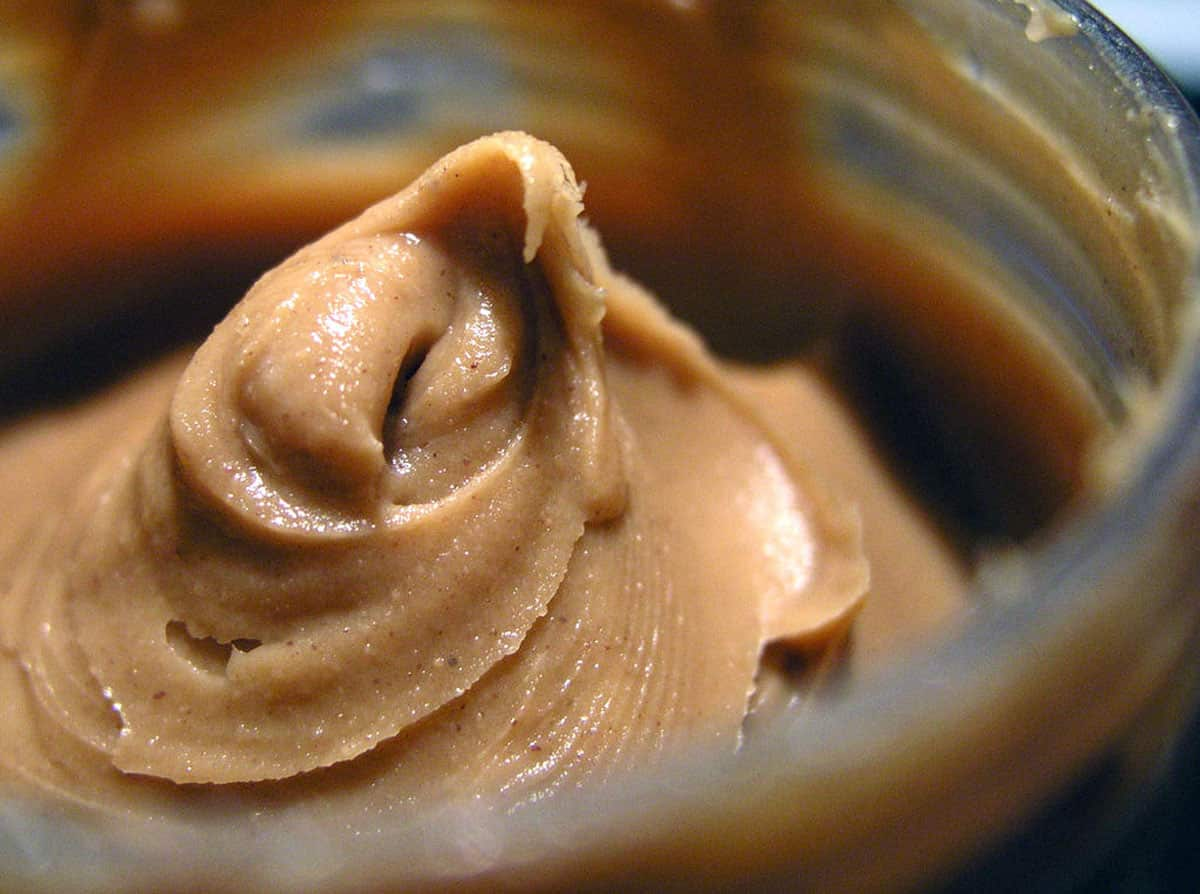Rich and nutty with a moreish combination of sweet and salty flavours, peanut butter is one of those foods that seems far too decadent to possibly be good for us. On the other hand, our growing appreciation of healthy fats (including those found in nuts) seems to boost the spread’s nutritional status. So, is peanut butter a health hero or a junk food? Should we spread it liberally on our sourdough, or classify it as a ‘sometimes’ food?
Natural vs regular peanut butter
If you tend to buy ‘natural’ peanut butter (the type made from 100 per cent crushed nuts), you’re onto a good thing. “What you want to be looking for in peanut butters and nut butters in general is a high percentage of nuts and no added sugars, salts and fats, because really all you need is to have crushed nuts in the jar,” says Lisa Yates, program manager and accredited practising dietitian at (a nut industry-funded initiative that provides information and recipes).
That said, contrary to popular opinion, regular peanut butters aren’t actually loaded with salt, sugar and toxic hydrogenated oils. “Looking at the ingredients in a jar of commercial peanut butter, a serving size (1 tablespoon or 22 grams) has 1.9 grams of sugar which is not much in the scheme of things and 127 mg of sodium, compared to around 113 mg in a piece of bread,” says Kate Di Prima, accredited practising dietitian and spokesperson for the Dietitians Association of Australia. “The total fat is 11.3 gm and it’s mostly monounsaturated healthy fat.”
As for the hydrogenated, trans-fat-laden oils that are often assumed to lurk in the nutty spread? “Most of the peanut butters available in Australia have less than one gram of trans fats in them, so the usage of hydrogenated oils would be minimal if at all,” assures Di Prima.
Where natural peanut butter may be particularly beneficial is if you’re trying to overcome cravings for salty or sweet foods. “If you’re trying to go back to just the natural flavours of foods, you want to avoid anything with added sugars and salts because it will encourage you to keep searching for that extra sugar and salt,” says Di Prima.

It's often said that peanut butter is full of bad fats - but that's not true. Source: PiccoloNamek at English Wikipedia
The perks of peanuts
So, both regular and natural peanut butters are safely out of the junk food category. But does that mean they are legitimate health foods? It’s a question tackled by Professor Alice Roberts and dietitian Sue Baic in Episode 3 of . Looking at the calories in a tablespoon of peanut butter, they conclude it’s the equivalent of about four squares of chocolate. “The difference between peanut butter and chocolate is that peanut butter is not what we would call empty calories,” says Baic. “It’s got things like Vitamin E, B vitamins, folic acid and some really useful minerals like zinc, magnesium and copper.”
Also encouraging is the fact that Australian peanut butter is particularly rich in good fats. “Peanuts that are grown in Australia have a higher level of oleic acid, a type of healthy monounsaturated fat,” notes Yates. Add to that protein and fibre, and you have a nutrient powerhouse.
And, it seems our favourite way to enjoy PB – spread on our morning toast, is also a nutrition win. “Peanut butter contains some of the essential building blocks of protein that our body needs and toast contains others; they are complementary proteins,” says Roberts. “Put them together and they’re nutritionally very good for us.”
What about other nut butters?
In recent years, the variety of nut butters in supermarkets and health food stores has increased dramatically, with everything from almond, cashew and hazelnut spreads to combination spreads like almond, brazil nut and cashew (‘ABC’ spread) and almond and chia on offer.
“Across the board, nuts contain over 30 different nutrients, but each nut will have one stand-out nutrient, so for instance almonds contain Vitamin E, brazil nuts are extremely high in the antioxidant selenium, and cashews are high in plant iron,” says Yates. To ensure you get the greatest spectrum of nutrients, go for a mixed nut spread, or mix up the types of spreads that you buy.
Go for products made from 100 per cent nuts, or scan the ingredients to ensure sugar and salt aren’t in the top three (which indicates a high content). Also, steer away from nut spreads containing coconut or cocoa powder, which fall into the treat foods zone due to the mixed evidence around the impact of coconut oil on cholesterol, and the fact that chocolate spreads tend to be high in sugar. “If you want to be 100 per cent sure of what the ingredients are, go to your local health food store, choose some nuts and ask them to blend them down for you,” suggests Di Prima. Or make your own at home with .
As for just how nuts we can go with these spreads? “The in the Australian dietary guidelines is a , or about 1.5 tablespoons of nut spread,” says Yates. That doesn’t mean you can’t enjoy more – even if you’re watching your waistline. “We did a systematic review and found that eating nuts does not cause weight gain, and in some studies, people were eating 100 gm of nuts a day,” says Yates. “Even the cholesterol-lowering research is indicating that you probably need about 60 gm a day.”
Peanut butter in jar image by
cooking with the good spread

Chocolate peanut butter brownie




